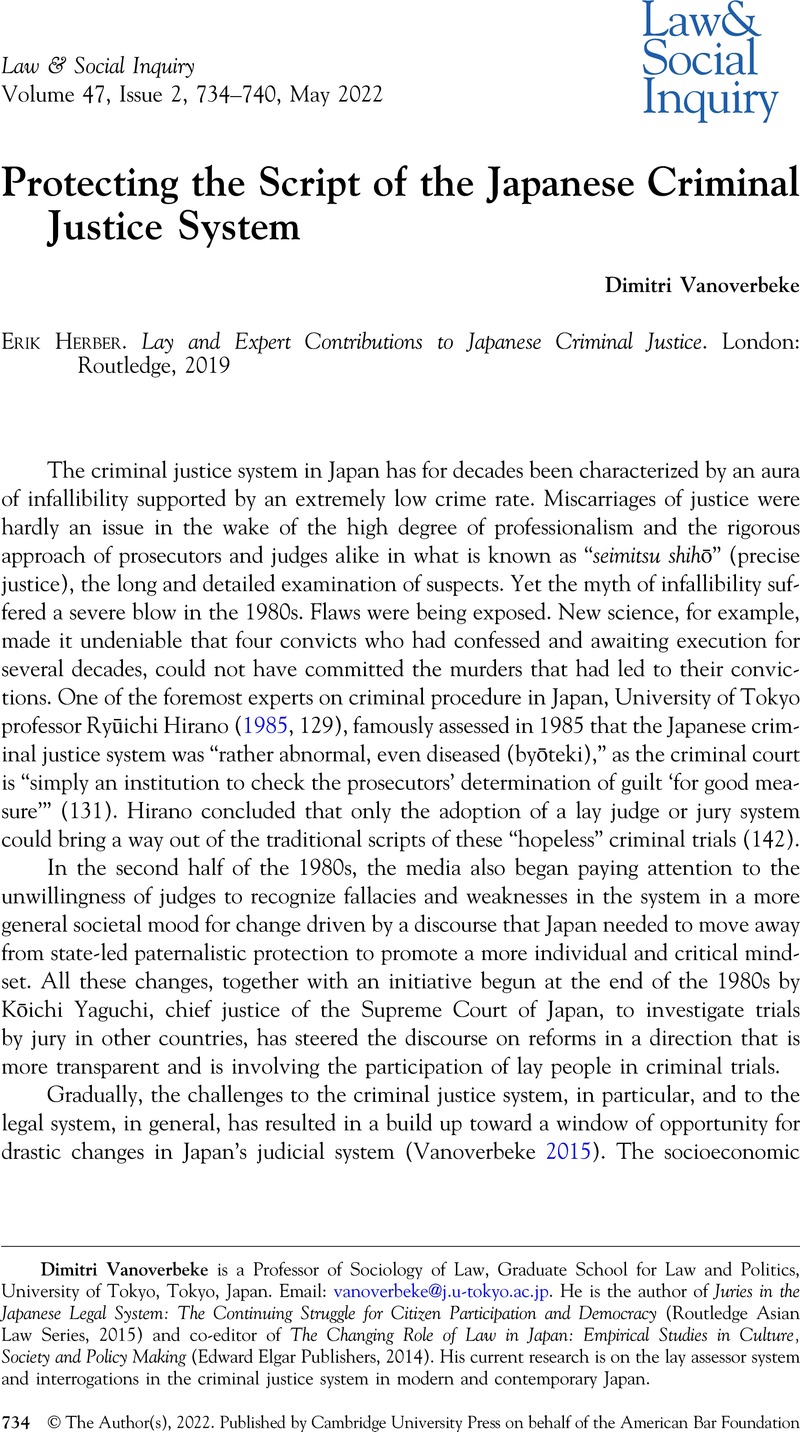No CrossRef data available.
Published online by Cambridge University Press: 04 March 2022

He is the author of Juries in the Japanese Legal System: The Continuing Struggle for Citizen Participation and Democracy (Routledge Asian Law Series, 2015) and co-editor of The Changing Role of Law in Japan: Empirical Studies in Culture, Society and Policy Making (Edward Elgar Publishers, 2014). His current research is on the lay assessor system and interrogations in the criminal justice system in modern and contemporary Japan.